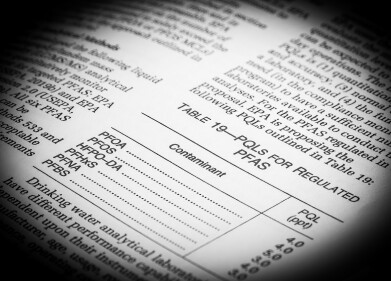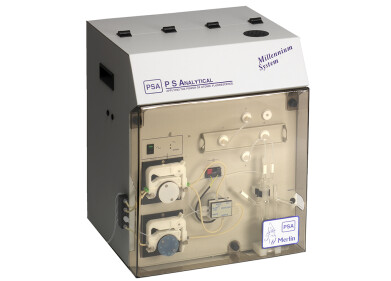Environmental laboratory
Day 2 of ICMGP 2022: Mercury Accumulation in Humans and Ecosystems
Jul 26 2022
Even in 2013, when it was formally ratified, the United Nations’ Minamata Convention on Mercury had a desperate sense of urgency, of having already run out of time. As one of the most harmful anthropogenic pollutants, the coordinated reduction of both exposure and emission leapt immediately to the top of the list of priorities in the management of public health worldwide. More recently, however, this urgency has become part of another global race against time, as concerns began to be raised over mercury’s role in the climate crisis. As a contribution to these discussions, this year’s International Conference on Mercury as a Global Pollutant (ICMGP), which kicked off today, will centre innovations aimed at reducing mercury emissions to achieve a greener world.
Our understanding of mercury is still developing. Like any other evolving field, the knowledge of the general public lags behind the research. Take a common sentiment regarding the levels of mercury in fish: "It’s best to eat a fair amount of fish since it’s so good for you but it’s best to limit yourself because of all that mercury.” Now, consider the state of the scientific research. For years, observational epidemiological studies have upheld that fish consumption in pregnancy benefits the neurodevelopment of children, studies which those researchers concerned about the toxicity of methylmercury have criticised for focussing on populations with some of the lowest rate of fish consumption.
To address this omission, and begin to clarify the true link between fish consumption, maternal nutrition, and adverse outcomes, Dr. Alison Yeates of Ulster University conducted an experiment using a population with relatively high exposures to methylmercury. Dr. Yeates’ surprising conclusion? Where fish consumption is substantially greater than current global recommendations, no evidence was found of adverse associations between maternal fish consumption and children’s neurodevelopment across numerous time-points up to nine years of age. A victory for pescatarians, then?
Well, it might be best to hold your horses (or salmon, maybe?). Speaking on behalf of the Instituto de Salud Carlos III, Ana Cañas Portilla, Ph.D., paints a more dismal picture. Although human biomonitoring studies for mercury exposure by seafood have been all-the-rage for a few years now, none have yet focussed on teenagers. Last year, the first nation-wide survey of mercury levels in adolescents was conducted in Spain. About 500 teenagers (14- to 16-years-old) were sampled, all of whom lived in cities, using atomic absorption spectroscopy. As expected, adolescents from two coastal cities, Huelva and Alicante, presented the highest mercury levels. Most troublingly, about 13% of the participants had concentration of mercury in their hair that exceeded the World Health Organisation’s guideline (2.3 μg/g). It’s safe to say, then, that ICMGP 2022 has given attendees plenty of food for thought on the issue of fish consumption.
From the deep, blue sea to the deep, blue ice-cores of the Artic and Antarctic, now, as Saebom Jung from Pohang University of Science and Technology tells us all about the research into the internal dynamics of mercury in penguins, which might serve as a potential bioindicator of mercury in the remotest regions of the Earth. As Ms. Jung notes, it’s an under-explored topic, as most researchers prefer to study more typical terrestrial and freshwater environments. Much of the mercury finding its way into the poor Adelie and Emperor penguins studied by Ms. Jung’s team is coming from the High Arctic rivers that have been severely impacted by permafrost degradation, on which Jane Kirk of Environment and Climate Change Canada gives a fascinating (and worrying) talk. After studying the variations in mercury fluxes over a decade, Ms. Kirk feels confident in predicting that the transport of mercury along these High Arctic pathways will only increase as climate change forces rains to migrate towards these areas and drives local temperatures up, both of which degrade and disturb proximate permafrost.
With that heady, troubling conclusion, it’s probably best to get our feet on solid ground again. For the University of Colorado, Boulder, Hannah Miller presents us with a paradox. Although the United States has managed to successfully reduce its mercury emissions in recent years, many of the mountainous biospheres in its western-most regions are receiving increasing rates of mercury sequestration. Unfortunately for the States, Ms. Miller notes, mountain systems have been flagged as some of the most effective mercury sinks – for instance, Miller cites a study that holds these ecosystems responsible for absorbing up to 80% of atmospheric mercury!
It’s an open question, though, as to why this might be the case; Miller’s presentation foregrounds readings that suggests this sequestration has more to do with the sort of soil found at that elevation than it has to do with the elevation itself. But mountains are, of course, not the only terrestrial ecosystem with a penchant for mercury absorption, as David McLagan, Ph.D., of Queens University reminds us. Predominantly, trees take up mercury from the atmosphere via stomatal assimilation of gaseous elemental mercury, wherein it’s oxidised and transported to parts of the anatomy that retain it for long periods of time. Indeed, Mr. McLagan observed this long-term contamination when fractionating sapwood and xylem solutions.
It’s been another whirlwind of a day, with more than twenty unique and challenging presentations from some of the world’s leading researchers, regulators and inventors working in the field of mercury pollution. Perhaps the best part, though, is that we have another four days ahead of us. It has to be said, and said again, that if you’re involved in environmental mercury, there’s really nowhere else that you should be than at ICMGP 2022.
For more information, visit the International Conference on Mercury as Global Pollutant.
Digital Edition
AET 28.4 Oct/Nov 2024
November 2024
Gas Detection - Go from lagging to leading: why investment in gas detection makes sense Air Monitoring - Swirl and vortex meters will aid green hydrogen production - Beyond the Stack: Emi...
View all digital editions
Events
Jan 20 2025 San Diego, CA, USA
Carrefour des Gestions Locales de L'eau
Jan 22 2025 Rennes, France
Safety, Health & Wellbeing LIVE
Jan 22 2025 Manchester, UK
Jan 25 2025 San Diego, CA, USA
Jan 29 2025 Tokyo, Japan
.jpg)


















